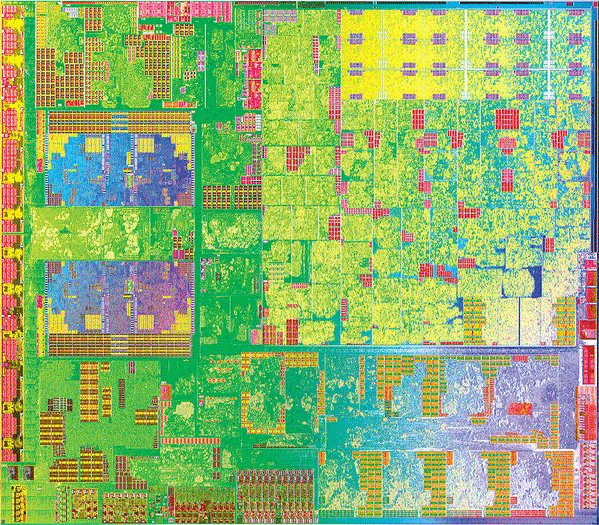NAS Explained
NAS Explained
We have come a very long way since the birth of affordable home computing. A memorable episode of 'The Computer Chronicles' once covered Intel's then-new Pentium 1 processor and how a large data company in the US was harnessing the power of the Pentium to quickly rifle through their... 3.5 GB of company files. Back then, this was a staggering amount of data. Nowadays, your average smartphone has more system memory than that. It's been a fairly rapid 26 years, hasn't it?
Times have changed and our storage requirements have moved from Kilobytes to Megabytes, to Gigabytes, and now even Terabytes of storage. And sure, it won't be long until we reach Petabytes either. Oh, and after that, there are Exabytes and then Zettabytes.
|
File Storage Capacity by Bits and Bytes |
||||
|
|
Byte |
Kilobyte |
Megabyte |
Gigabyte |
|
Kilobyte |
1,024 |
1 |
1,024 |
1,048,576 |
|
Megabyte |
1,048,576 |
1,024 |
1 |
1,024 |
|
Gigabyte |
1,073,741,824 |
1,048,576 |
1,024 |
1 |
|
Terabyte |
1,099,511,627,776 |
1,073,741,824 |
1,048,576 |
1,024 |
|
Petabyte |
1,125,899,906,842,620 |
1,099,511,627,776 |
1,073,741,824 |
1,048,576 |
|
Exabyte |
1,152,921,504,606,850,000 |
1,125,899,906,842,620 |
1,099,511,627,776 |
1,073,741,824 |
|
Zettabyte |
1,180,591,620,717,410,000,000 |
1,152,921,504,606,850,000 |
1,125,899,906,842,620 |
1,099,511,627,776 |
So, we’ve passed the Terabyte marker. With our hefty demand for storage capabilities, the industry had to constantly adapt and introduce new features in hardware. Storage units got much bigger in volume over the years, and 16 TB HDDs have just been introduced to the market, with higher-TB HDDs already in the pipeline. In that line of storage solutions, there is one product series that’s growing fast and is now reaching SOHO and consumer segments of the market. They are called NAS units, or Network Attached Storage. And there has been a lot of development in these nifty little boxes. Pretty much they are little servers that can hook onto your network and then function as file-servers. NAS units are often small, do not use a lot of power compared to, say, your PC, but they are highly configurable, and offer redundancy, as some models can even handle RAID internally. Network Attached Storage units are among the most advanced home servers available on the market today. Products feature multiple HDD setups, partitions, RAID, USER and USERGROUP based access, FTP, web server, MySQL, and hot-swappable drives. These are just some of the features that a NAS unit can handle. And though expensive, a product like this is just too darn handy when it comes to file-storage and management over your network.
Terra Master F5-221
The Terra Master F5-221 uses the Apollo Lake Intel Celeron J3355, a dual-core 64-bit x86 desktop microprocessor introduced by Intel in 2016. The processor is based on that Goldmont microarchitecture and is manufactured on a 14 nm process, this is a 10 Watt rated SoC. It incorporates Intel's HD Graphics 500 GPU operating at 250 MHz with a burst frequency of 700 MHz. This IGP can manage resolutions up-to 3840x2160 @30 Hz and offers support for:
- Video decode hardware acceleration including support for HEVC (H.265), H.264, MVC, VP8, VP9, MPEG2, VC-1, WMV9, JPEG/MJPEG.
- Video encode hardware acceleration including support for HEVC (H.265), H.264, MVC, VP8, VP9, JPEG/MJPEG.
The Terra Master F5-221 supports up to 5x 2.5'' SSDs/HDDs or 5x 3.5'' HDDs, and RAID setups including 0, 1, 5, 6, and 10 are all supported as well. Once you have installed your hardware, your NAS will need to be connected to your network via an ethernet cable or directly to your PC. In my case, it will be going into a TP-Link Mesh system (Deco M3). Once this is done, a desktop application is installed on all machines that you wish to be able to control/configure the NAS. After that, the software will search for compatible NAS devices that are on the same network as the local computer. Installation of the Linux GUI (nicknamed TOS, or TerraMaster Operating System) is now done, allowing for actual control of the NAS rather than just general device management. Next, you need to set a date and time, device name and password, set an IP, and then configure your RAID (if needed). After that the setup of the device is complete.
Ultimately, the advantages of having a NAS are numerous, but the most relevant ones would be:
- Low-power solution for extra storage.
- Potential for high-capacity, redundant, and easily expandable storage.
- It’s relatively affordable
- Large feature sets that expand well beyond 'just some extra storage.'
Next, we will give the product an external look over, unbox it, and then get on with the review.


